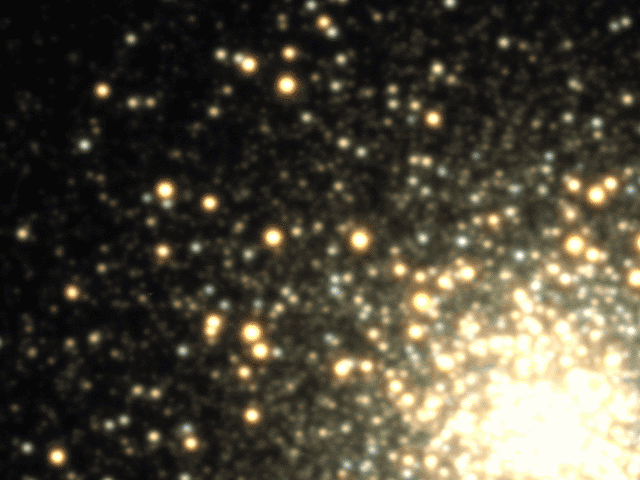M3: Inconstant Star Cluster

Explanation:
Star clusters appear constant because photographs of
them are frozen in time.
In reality, though,
cluster stars
swarm the center and frequently fluctuate in brightness.
Although the time it takes for stars to
cross
a cluster is about 100,000 years,
the time it takes for a star to fluctuate noticeably
can be less than one night.
In fact, the
above time lapse movie of bright
globular cluster
M3 was taken over a single night.
Most of the variable stars
visible above are
RR Lyrae stars, stars that can quickly double their
brightness while becoming noticeably bluer.
Furthermore,
RR Lyrae stars vary their light in a distinctive pattern
that allows unique identification.
Lastly, since
RR Lyrae stars all have the same intrinsic brightness,
identifying them and measuring how dim they appear
tells how far they are, since
faintness means farness.
These distances, in turn, help calibrate the
scale of the entire universe.
Authors & editors:
Robert Nemiroff
(MTU) &
Jerry Bonnell
(USRA)
NASA Web Site Statements, Warnings,
and Disclaimers
NASA Official: Jay Norris.
Specific
rights apply.
A service of:
LHEA at
NASA /
GSFC
& Michigan Tech. U.

